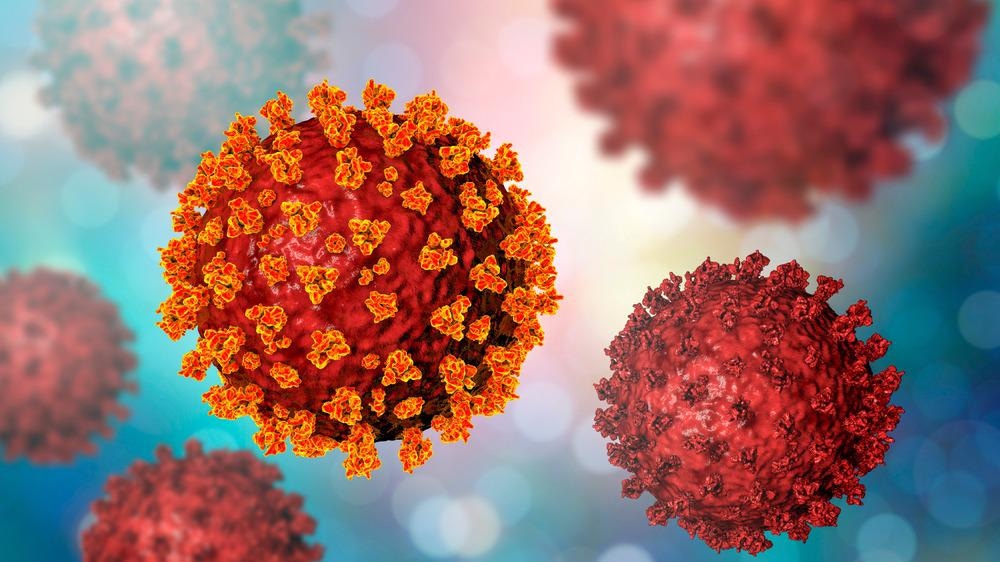Researchers have released a paper available as a pre-proof in the journal Carbon that demonstrated sunlight-activated sterilization of severe acute respiratory syndrome coronavirus 2 (SARS-CoV-2) on three-dimensional (3D)-printed graphene polylactic acid (PLA-G) surfaces.

Study: 3D-printed graphene polylactic acid devices resistant to SARS-CoV-2: Sunlight-mediated sterilization of additive manufactured objects. Image Credit: Kateryna Kon/Shutterstock.com
Background
3D manufacturing has significantly helped in combating the coronavirus disease (COVID-19) pandemic by facilitating the development of products with novel designs within a short duration. Desktop 3D printers represent the low-cost and most accessible 3D manufacturing technique. These printers are typically based on melted thermoplastics and fused deposition modeling.
Thermoplastic polymers (TPs) are the most commonly used polymers in additive manufacturing techniques owing to their low melting temperatures and low cost.
Among all TPs, PLA has gained considerable attention in medical applications owing to its biodegradability and biocompatibility.
PLA degrades through hydrolysis to lactic acid depending on the degree of water contact, autocatalytic behavior, temperature, and pH. However, certain drawbacks of PLA, such as poor thermal stability, low heat-distortion temperature, and brittleness, have limited its use in the production of medical devices. Additionally, medical devices based on PLA are ineffective in preventing virus transmission, specifically in nosocomial environments.
The electrical and thermal conductivity, as well as the antiviral and antibacterial properties of PLA, can be improved using different additives such as carbon and metal nanoparticles (NPs) and cellulose.
Among nanomaterials, graphene displays significant potential in the biomedical field owing to its robust antibacterial properties and pro-differentiating effects on eukaryotic cells. Additionally, graphene, even in small amounts, can reinforce the thermal, optical, and mechanical properties of 3D printed structures to reduce the toxicity of these structures and the cost of production.
Previous studies have demonstrated that graphene can inhibit the infectivity of SARS-CoV-2 when it is embedded in textiles. Graphene can strongly interact with light, specifically in the near-infrared (NIR) region, which is essential for the hyperthermic killing of microbial species and photothermal therapies (PTT).
The Study
In this study, researchers investigated the feasibility of incorporating graphene NPs into PLA filaments to create sterilizable objects for medical applications. PLA-G filaments comprising graphene NPs were evaluated for mechanical strength, NIR thermal and absorption properties, and anti-SARS-CoV-2 properties.
PLA filaments containing 0%, 0.5%, 2%, and 5% graphene NPs were used as primary samples for the study. Graphene NPs were produced using the exfoliation, expansion, and drying method. A computer-aided design (CAD) software and 3D computer graphics were employed to design the 3D printed scaffold structure, while structures were produced using the Ultimaker S3 3D printer. The thickness of a single 3D printed layer was fixed at 200 μm.
SEM Supra 25 was utilized to perform scanning electron microscopy (SEM) to evaluate the structure of the 3D printed material, while a NanoWizard II was used to perform atomic force microscopy (AFM). Elastic modulus (EM), elongation at break (EB), and tensile strength (TS) were determined using 3D printed dog-bone-shaped cylinders or specimens equipped with a mechanical analyzer.
African green monkey kidney epithelial cells (VERO), murine myoblast cells (C2C12), and human adenocarcinomic alveolar basal epithelial cells (A549) were used for cell cultures. The toxicity of PLA-G and PLA filaments was determined by performing toxicity assays on C2C12 and VERO cells. A Nikon microscope (20X) was employed to obtain the confocal microscopy images. ISO18184 procedures were followed to evaluate the anti-SARS-CoV-2 effects of PLA-G and PLA on VERO cells.
In order to assess the photothermal effect of the 3D-printed samples, an 808 nm laser diode was utilized to irradiate dry specimens for multiple time spans at 0.07 or 0.1 W cm-2 power to stimulate a thermal effect similar to sunlight on a measured summer day. The sample temperature was recorded using a thermal imaging camera.
Observations
In the 3D-printed structures, the average lateral dimension of graphene nanoplatelets was 3 µm, and the number of layers in the structure was four to six. No significant changes in the 3D-printed structures were observed due to the addition of graphene NPs.
The surface roughness of structures increased with the rising concentration of graphene NPs. Both PLA-G and PLA displayed almost similar hydrophobicity. The EB, yield stress, the maximum stress in tension, and the compression and tensile elastic modules of the structures increased significantly with the rising percentage of graphene NPs in PLA filaments.
The presence of graphene NPs in PLA filaments did not hinder the growth of different cells evaluated in the study. The biocompatibility of these cells was maintained even after many days of growth.
The viral infectivity was decreased corresponding to the rising density of graphene NPs in the filament. PLA-G demonstrated a significant rise in temperature with the increasing concentration of graphene when irradiated with 808 nm laser with 0.1 W cm-2 power, reaching the highest temperature of 80oC at 5% concentration of graphene NPs. However, no such change in temperature was observed in the PLA samples at the same power intensity.
The SARS-CoV-2 killing efficiency on the surfaces of PLA filaments with 5% graphene concentration was 91.4% when the surfaces were irradiated using NIR light for three minutes at 0.1 W cm-2 power intensity.
Taken together, the findings of this study demonstrated that PLA-G can be used effectively to produce 3D-printed structures, specifically medical devices, that can be sterilized daily using sunlight to prevent virus transmission.
Reference
Papi, M., Perini, G., Bozzi, M. et al. (2022) 3D-printed graphene polylactic acid devices resistant to SARS-CoV-2: Sunlight-mediated sterilization of additive manufactured objects. Carbon. https://www.sciencedirect.com/science/article/pii/S0008622322002081
Disclaimer: The views expressed here are those of the author expressed in their private capacity and do not necessarily represent the views of AZoM.com Limited T/A AZoNetwork the owner and operator of this website. This disclaimer forms part of the Terms and conditions of use of this website.